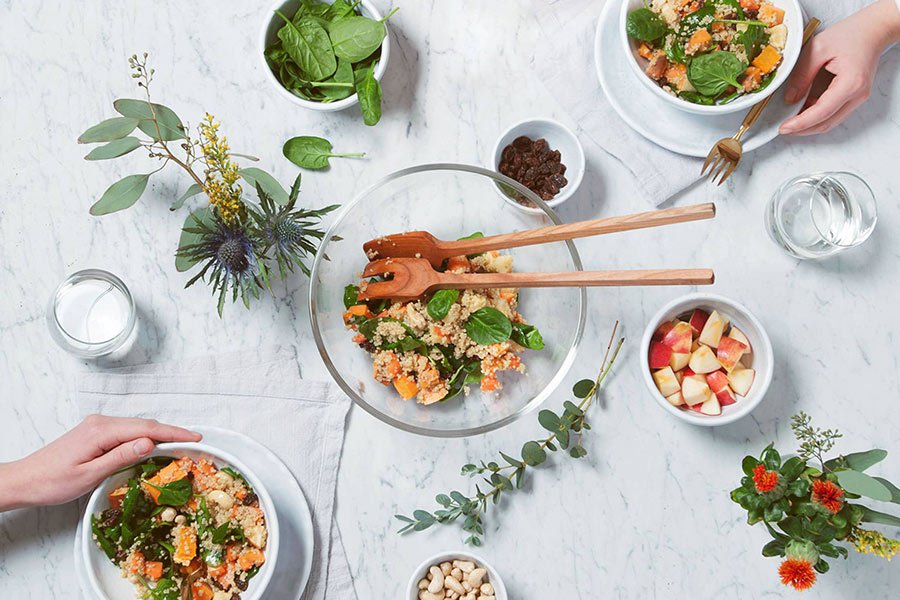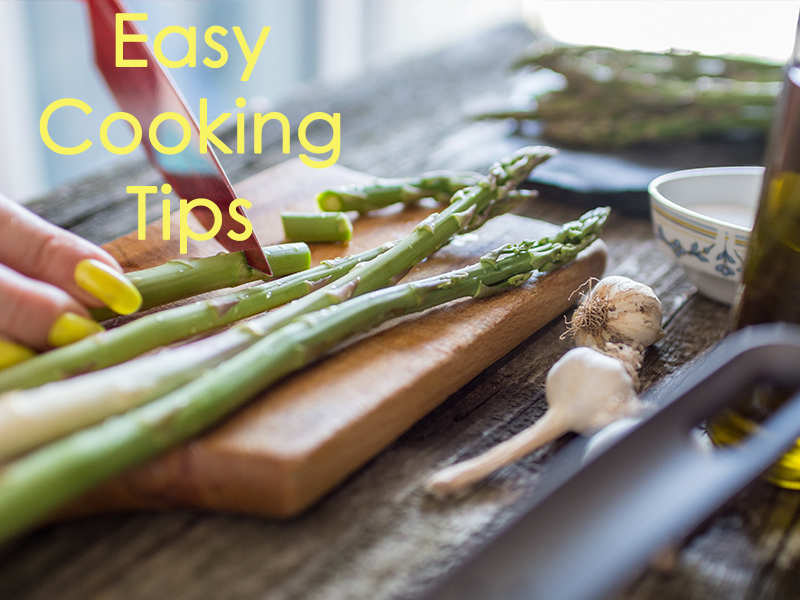
These cooking tips will make it easier for both novices and pros to cook better food. Make sure you understand the order of ingredients before adding them to a dish. Different ingredients cook at different rates. Learn how to use all your senses to prepare food. If you don't have the sense of smell, you can learn to use a thermometer for checking the temperature of food. Do not be afraid to experiment and try out new flavors.
Ten simple cooking techniques
Learning to cook is an essential skill to improve the quality of your life, especially if you like to experiment with new dishes. Even the simplest of dishes can be made more delicious and even healthier if you learn some basic cooking tricks. There are many different ways to cook chicken and salmon. The first part of the operation is beating eggs. Cooking eggs takes just five minutes! A useful trick for cooking eggs is to first blot the meat. This helps ensure that the meat cooks evenly.
Defrost frozen ingredients before you use them in your cooking. This will help prevent the ingredients from becoming brittle. To avoid steam and heat from escaping from the oven or fridge, freeze frozen items. It will preserve their flavors. If you don’t have one, you can keep them frozen in the fridge.
Proper measuring cups
A set can come in many sizes and shapes. A set of 6 pieces contains a measuring cup for each of the common measurements, including a 2/3 cup and a 3/4 cup. These are great for measuring dry ingredients such flour but not always the easiest. A set of these cups will allow you to measure all liquids and spices accurately. Here are some helpful tips on how to buy measuring cups that you can use for cooking.

You should first buy a set that is both dry and liquid. It's not possible to accidentally fill them with liquid, even if they are meant for dry ingredients. But it is best to not dip the measuring cup into flour or other dry ingredients. That could make the measurement unreliable. In that case, you'll end up with a less accurate measurement because liquid measuring cups have an ambiguous measurement line.
Storing food at the right place
It's important to first identify the foods you intend to use in order for food storage to work properly. Some items can be kept in the fridge and pantry. Some items should be kept in glass jars. Non-perishables should be kept in glass jars. These items should be stored in a dark and cool area, away from direct sun. Here are some helpful tips for properly storing food in your fridge.
First, make sure your kitchen is clean and clutter-free. Avoid storing food near household items. Food is sensitive. Keep it in a dark, cool cabinet. Your containers should be tightly fitted to ensure food remains fresh. Keep your food away from pipes and other sources of heat. Prolonged exposure to light will also affect the food's color.
You can prepare food using only your senses
Cooking can be made more enjoyable if you use all your senses. For example, relying on your taste buds can help you choose the right ingredients for your recipes. Imagine the flavor and cooking time of a particular dish. The same goes for your visual senses, including touch and smell. You can use your imagination and listen to your body when you shop for ingredients. Red cabbage can be substituted for broccoli if it makes for a unique and delicious dish.

It'll make it easier to find new foods, judge their quality, enjoy them more, and use all five of your senses. You'll discover a whole new world. Learn about the science behind flavour and use your senses as a guide to cooking. You'll be able to distinguish between an authentic emoji peach from a fake one. Even rhubarb and grapefruit can be appreciated bitterly. If your kitchen is cluttered, you can use all your senses and look around to make sure that everything is in order.
FAQ
Can I cook with my family?
Yes! Yes, kids love to help in kitchen. It's an enjoyable activity that teaches responsibility and teamwork. Children can help in everything, from washing vegetables and cutting onions. They will enjoy helping you to cook if your children are safe with knives.
Is it possible to be self-taught?
You can learn to cook by yourself! No matter how much you know, cooking is something that everyone enjoys. If you are interested in learning how to cook, start cooking at home. Start small with simple things like spaghetti sauce or pancakes for breakfast. It is important to experiment with new recipes to learn how to cook. You may even want to make a few mistakes along the way.
Cooking can take anywhere from a few hours to several months depending on the skill level. It's important that you remember that cooking does not mean following a recipe. There are many ways of cooking food. So if you have an idea for a recipe, use it.
What is the average time it takes to become a chef? What Is the Average Career Path?
The average time it takes to become a chef is five years. During this time, you will study basic cooking techniques and gain experience working as a kitchen assistant. After you've completed your training you can apply to be a line cook or sous chef. The average annual salary for a professional chef is between $25,000 and $60,000
Do I need to buy any ingredients to cook?
You don't have to buy all ingredients. Premade sauces can be found in most grocery stores. If you are looking to save money, premade meals may be a good option.
Statistics
- The median pay for a chef or head cook is $53,380 per year or $25.66/hour, according to the U.S. Bureau of Labor Statistics (BLS). (learnhowtobecome.org)
- You'll be amazed that over 90% of CIA students receive scholarships and grants to finish their culinary studies. (ischoolconnect.com)
- under 10 Kids have been taught that there is special food just for them, and Fiese says that 10 percent of kids will throw a tantrum if they don't get the food they want. (washingtonpost.com)
External Links
How To
How to make a perfect Omelette
Omelets are one of my favorite foods to eat at breakfast. But how do you make them perfectly? I've tried many recipes and different methods but none have worked. So I wanted to share some tips and tricks so that you can make delicious, fluffy omelets every morn.
It is important to know that eggs can be temperamental when making omelets. The eggs must be fresh from an organic source and kept at room temperature until they are ready to be cooked. The yolks and whites will not form properly if they aren't kept cold enough. Your omelets will look strangely colored if this happens. If you're going to cook them immediately, it is best if the eggs are still warm.
Another tip is to separate your egg before adding it into the pan. You don't want any white to get mixed up with the yolk because this could cause the omelet to curdle.
You might burn the bottom of the egg if you place the egg directly on the stovetop. This could ruin the texture of your omelet. Instead, heat the egg for 10 seconds in the microwave before placing it in the pan. The microwave heat will cook the egg just right without making it too hot.
Let's now talk about mixing eggs. When mixing eggs, it is important to thoroughly beat them. To do this, take the bowl from the mixer and flip it upside-down. Then, vigorously shake the bowl. This way, the air inside the bowl gets whipped around and mixes the egg thoroughly.
Now it's time to have fun: pour the milk into the mixture. Pour half the milk into the beaten egg mixture and then fold in the eggs. Do not worry if you see streaks of egg; they will disappear when the omelet is flipped.
After folding the eggs, place the pan on medium heat and wait for the oil to start sizzling. Add 1/4 cup butter to the oil and swirl it around to coat all sides of the pan. The lid should be carefully opened. Sprinkle salt in the pan. A pinch of salt will help prevent the omelet from sticking to the pan.
Once the omelet has formed completely, cover the pan and let it set for a few minutes. Flip the omelet by using a spatula. Cook the other half for another minute. Serve immediately after removing the omelet from its pan.
This recipe works best with whole milk, but skimmed milk also works.